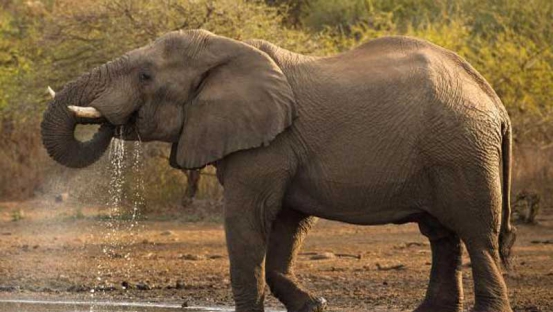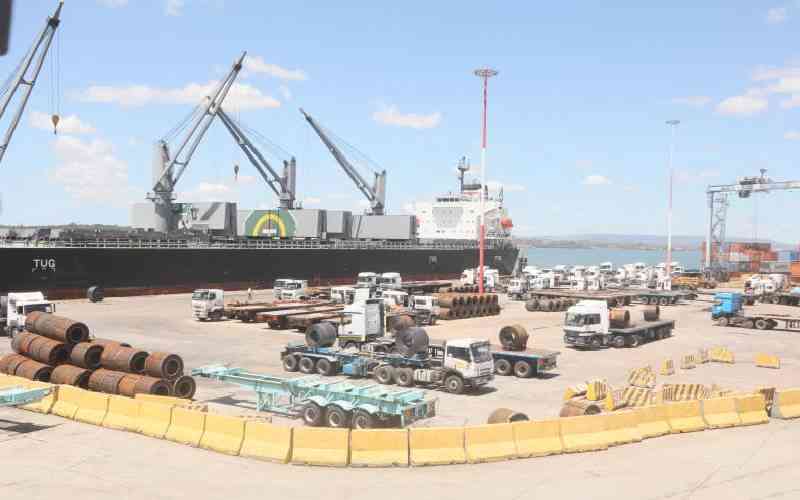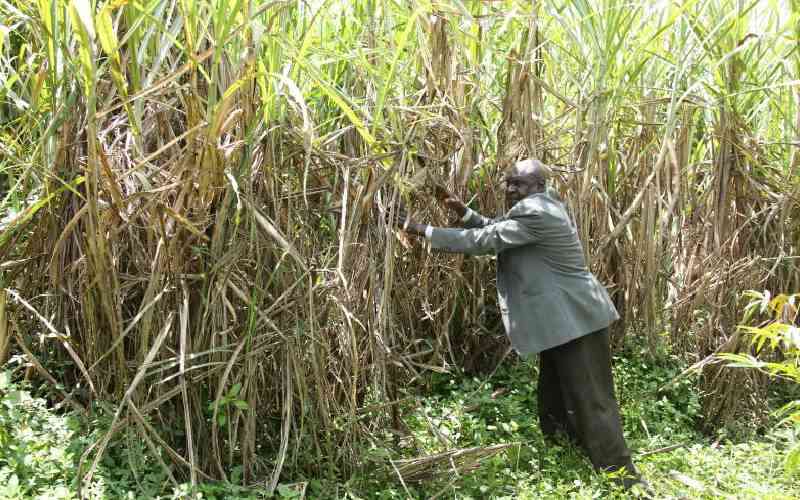
1. How long will it take for one person to walk along the border of Kenya? Compare this to the time it would take David Rudisha, the world 800 metres record holder
Kenya’s border covers a total of 3,446km inland with a coastline of 536km. According to the Nations Encyclopedia 2016, Kenya borders Ethiopia for 830km, Somalia for 682km, South Sudan for 232km, Tanzania for 769km and Uganda for 933km. While the numbers provide valuable information, it can be difficult to register distances properly.
We have calculated how long it would take an average pedestrian to walk along the Kenyan border. We then proceed to compare this to the time it would take Olympic gold medallist David Rudisha to cover the same distance.
An average person walks at a pace of 5km per hour; the speed being relative to the walker’s age, location and health condition. Taking this world average, it would take 28 days, 17 hours and 12 minutes for someone walking at 5 km/hour to walk the entire border of Kenya. However, this answer is theoretical as it entails that the person is walking at the same pace for almost a month with no break or interruption.
We push this further by comparing it with the time it would take Rudisha to cover the same distance at his world record speed of 1:40:91 for 800m. For the purpose of this calculation, Rudisha’s 2012 Olympic record was rounded at 1 minute 41 seconds. Strikingly, Rudisha would only need five days and 51 minutes to run round the border of Kenya — at the same pace of the world record he set at the 2012 London Olympic Games.
2. How much cement is produced in Kenya? How much cement would it take to build a wall on the border with Somalia? At what cost?
Cement, a powerful binder along with sand, is commonly used as a mortar to hold two materials together. Kenya has seven major cement manufacturers, whose production is increasing every year to meet growing demand for cement in the construction sector.
According to the Economic Survey 2016 by the Kenyan National Bureau of Statistics, Kenya produced 6,352.9 thousand tonnes of cement in 2015. Notably, competition in the cement sector has led to a decrease in cement prices to about Sh650 per 50kg bag. Sand prices on the other hand have tended to increase recently, especially in urban areas where it crossed Sh3000 per tonne in 2014.
We estimate how much cement and sand one would need to build a wall on the entire length of Kenya’s border with Somalia as has been proposed by government officials.
Knowing that Kenya borders Somalia for 682km and that the current price of cement is around Sh650 for a 50kg bag, and sand costs Sh3000 per tonne, we used a mortar estimator to calculate the quantity of cement and sand needed along with the associated costs.
According to the source4me.co.uk mortar estimator, building one kilometre of an eight-metre high wall would require 2,480 bags of cement (50kg) and 8,720 bags of sand (50kg). This implies that the construction of one kilometre of such a wall would costs Sh2.92 million. This translates to Sh1.61 million for cement and Sh1.31 million for the sand.
Covering the 682km of the Kenyan border with Somalia would require 1,169,136 bags of cement (50kg) at a cost of Sh1.09 billion and 5,947,040 bags of sand (50kg) at Sh890 million. The total cost will amount to Sh1.99 billion. Strikingly this price only includes cement and sand and does not take into account other related expenditures such as labour costs, water and transport. This would also mean using 8,456.6 tonnes of cement, more than Kenya’s total annual production of 6,352.9 tonnes in 2016.
In essence, constructing a wall separating Kenya from Somalia would put a huge strain on cement production as well as on the budget.
3. What is the total value of the ivory on elephants in Kenya?
Stay informed. Subscribe to our newsletter
Kenya is losing thousands of elephants every year despite their classification as endangered species and diverse protection efforts. Some have accused the government of failing to stop poaching, while others, especially economists, blame market failure whereby there is no incentive to conserve elephants. Natural resources economists have pushed for a more bottom-centered approach with the involvement of locals and the privatisation of wildlife in order to create preservation incentives. Zimbabwe, for instance, has made good use of this approach in the past with encouraging results in terms of elephant population.
We will calculate the value of ivory on Kenya’s elephants at the current trading price of ivory. According to the Economic Survey 2016, there were 15,800 elephants in Kenya in 2015, which is 5,000 less than the population four years ago. Conversely, the price per kilo of ivory has been increasing, thanks to steady demand and decreasing stocks. The NGO Save the Elephants estimated the price of a kilo of ivory to Sh210,00 in 2014, although because most of the ivory is traded through illegal channels, it is difficult to find the accurate market price. Furthermore, the price must have increased since 2014.
According to the Week Magazine, an adult male elephant can carry up to 114 kilos of ivory, but for the purpose of this calculation it was estimated that an average elephant carries 57kg of ivory. At a cost of Sh210,000/kg, the value of the ivory on a single elephant is worth Sh11.97 million. This indicates that the total value of Kenya’s 15,800 elephants will be Sh189 billion. If their economic value is no longer to be demonstrated, the need to find concrete solutions becomes critical as pressure abound to find new solutions to stop the slow extinction of elephants in Kenya.
4. How many commercial vessels are docked in Mombasa every month?
The Port of Mombasa acts as a key gate for the whole of East Africa, connecting Kenya with 80 ports and ensuring exports and imports of goods each year.
We look at the number of ships docking per month in Mombasa. Ships here refers to commercial vessels transporting containers and excludes other types of non-commercial maritime transports. This is based on the data provided in the Economic Survey 2016 and calculated with the year 2015 as a reference.
In 2015, a total of 1,694 ships docked in the port of Mombasa. This means an average of 141 ships docked in Mombasa every month with 4 to 5 ships processed each day. This represents 26,732 tonnes of cargo handled in a year, making Mombasa a decisive node in the East African sea trade circuit.
5. What is the total amount of elderly cash-transfers in Kenya?
Taking care of the elders and ensuring that they do not become a burden to their inner circle of families and friends is one of the key responsibilities of states. Kenya’s elderly population, defined as beyond 65 years of age, represented 1.3 million people in 2009, according to the population census. Since 2004, Kenya implemented cash transfers to benefit the vulnerable part of its population, including the elderly. More specifically, the Kenyan government introduced the Old People Cash Transfer Programme in 2006 targeting those who were formerly excluded from retirement plan. The aim of the cash transfers was to help reduce poverty by setting up social protection measures, thus improving living conditions of elders in Kenya through monthly cash transfers.
We look at the total amount spent on elderly cash-transfer in Kenya. It should be noted that beneficiaries from this programme were carefully selected across the country among the most impoverished households respecting a regional balance.
The Economic Survey of 2016 states that Sh4.89 billion was disbursed in 2014/2015 rising to Sh7.33 million in 2015/2016. The allocated sum has also been increasing, each beneficiary receiving around Sh2000 monthly.
According to the National Gender and Equality Commission, while this increase in the total amount transferred to elderly is an optimistic perspective, concerns have been raised on possible irregularities, delays of transfers, unpredictability of the system, difficulties to access the funds transferred through banks in remote areas and the malfunctioning of the administration in charge.
 The Standard Group Plc is a
multi-media organization with investments in media platforms spanning newspaper
print operations, television, radio broadcasting, digital and online services. The
Standard Group is recognized as a leading multi-media house in Kenya with a key
influence in matters of national and international interest.
The Standard Group Plc is a
multi-media organization with investments in media platforms spanning newspaper
print operations, television, radio broadcasting, digital and online services. The
Standard Group is recognized as a leading multi-media house in Kenya with a key
influence in matters of national and international interest.
 The Standard Group Plc is a
multi-media organization with investments in media platforms spanning newspaper
print operations, television, radio broadcasting, digital and online services. The
Standard Group is recognized as a leading multi-media house in Kenya with a key
influence in matters of national and international interest.
The Standard Group Plc is a
multi-media organization with investments in media platforms spanning newspaper
print operations, television, radio broadcasting, digital and online services. The
Standard Group is recognized as a leading multi-media house in Kenya with a key
influence in matters of national and international interest.









